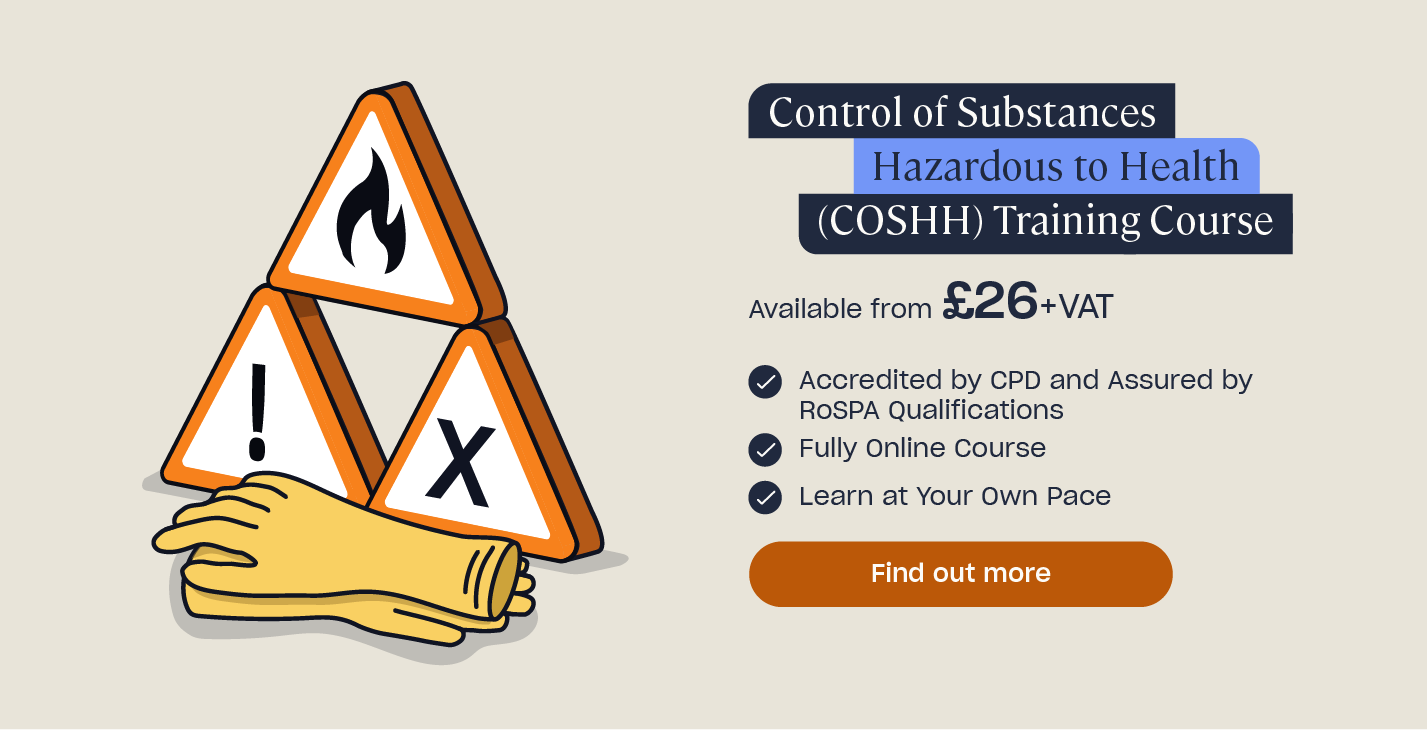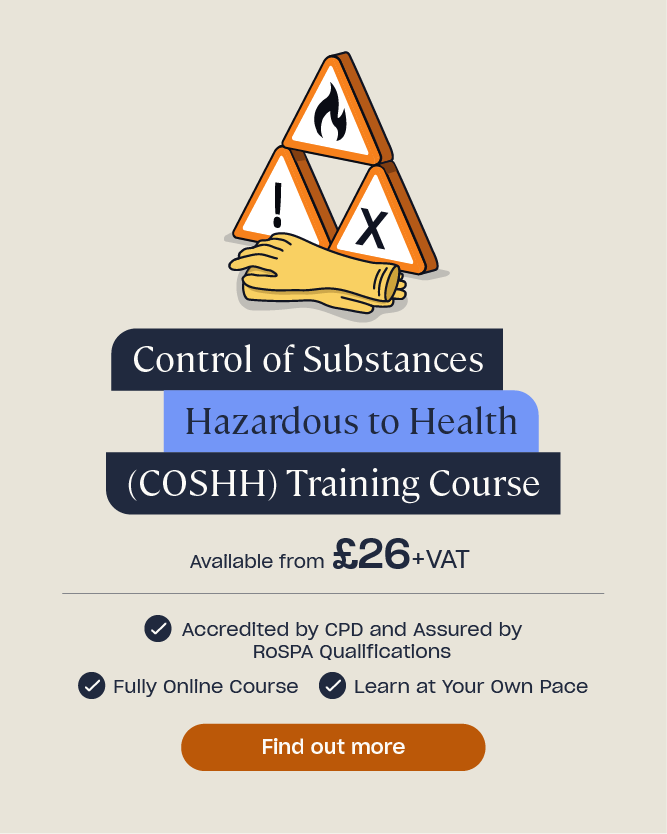A Hairdresser’s Guide to COSHH in the Salon
Consideration of COSHH in hairdressing is essential for health and safety. If you work in a hairdressers or beauty salon then you will be working with hazardous substances on a daily basis. You may not realise that the products you use have the potential to cause ill health, but even the most ordinary of substances, including shampoo and water, can cause damage to your skin overtime.
If you are the owner of a hair or beauty salon then you also have a duty to look after the health and safety of your staff and your customers, so precautions must be taken where hazardous substances are being used. But how can you ensure that you stay safe at work? Use our guide to COSHH in hairdressing to find out more.
Want to Learn More?
By completing our COSHH Training Course, you will be aware of how to undertake a COSHH risk assessment and know the different control measures that can be implemented to manage risks that hazardous substances can cause.
What Does COSHH Mean?
COSHH stands for the ‘Control of Substances Hazardous to Health‘. The COSHH Regulations requires all employers to ensure that they are sufficiently controlling harmful substances in the workplace. This means that any dangerous substances need to be identified and precautions should be taken to ensure that workers know how to use and handle them safely.
There are around 19,000 estimated new cases of breathing or lung problems caused or made worse by work each year, according to the HSE. The most common type of reported skin disease was contact dermatitis. Hairdressers and beauticians are two of the occupations most at risk, so it is essential that a COSHH plan is in place where you work.
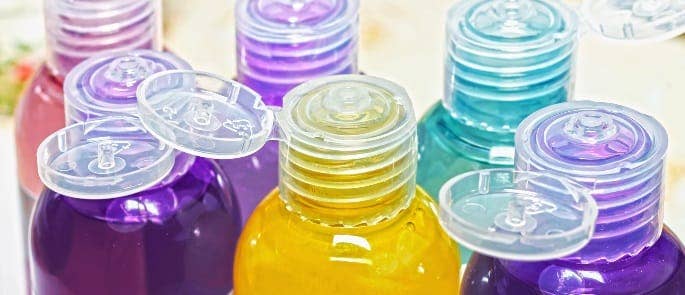
Which Substances are Hazardous in a Hairdresser’s?
Hazardous substances can take many forms, whether they are liquids, dusts, vapours, gases or fumes, and have the potential to exist in every workplace in the UK. It is important that you use a risk assessment to identify which hazardous substances are in your workplace so that you can use them safely.
In a hair salon, hazardous substances are likely to include:
- Aerosols.
- Shampoos and conditioners.
- Hair dye.
- Hairspray.
- Henna products.
- Cleaning chemicals and disinfectants.
If a product is dangerous to your health, then the manufacturer has a legal requirement to ensure that it is labelled with appropriate hazard symbols, warnings, health and safety advice and any personal protective equipment (PPE) that must be worn when handling it.
The GB CLP hazard pictograms are red and white, so look out for them on any products that you use. Remember to check whether the warning label on a product says ‘may cause sensitisation by skin contact’ or ‘can cause allergic reactions’ so that you can adopt the necessary precautions.
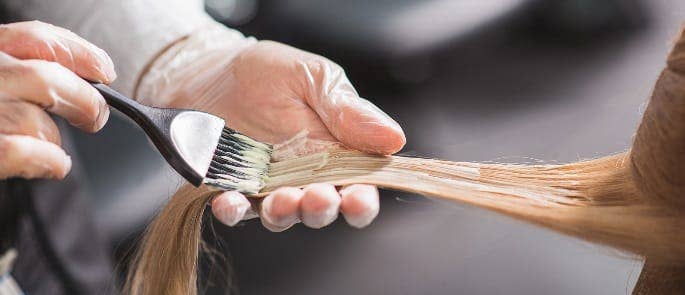
What Effects do Hazardous Substances Have on Health?
Hazardous substances can have a variety of ill health effects on those who have exposure to them, some more severe than others. In a hair salon, the effects are likely to include:
- Skin irritation or dermatitis from direct contact with the substance.
- Asthma from exposure to dusts or vapours.
- Infection from bacteria.
However, it is not just direct contact with the shampoo, dye or hairspray that can cause the problem.
The main routes of entry for hazardous substances are:
- Inhalation – for example, breathing in hairspray.
- Skin absorption – for example, if a chemical splashes onto an open wound.
- Injection – for example, coming into contact with contaminated sharp objects.
- Direct contact – for example, splashes or vapours in the eyes or on the skin.
- Ingestion – for example, swallowing chemicals or eating contaminated food.
Hair Salon Health and Safety
If you own a hair salon then you are responsible for ensuring the health and safety of your staff members, customers and anyone else who visits the premises. Not only does this mean considering COSHH in hairdressing, but you’ll also need to carry out a risk assessment for:
- Fire safety.
- Legionella and legionnaires’ disease, if your premises has a man-made water system. Legionella bacteria are covered by COSHH as they fall under the category of ‘biological agents’
- Manual handling, if staff members are required to carry loads.
- Lone working, if employees are ever working in the salon alone.
- Infection prevention and control.
- Slips, trips and falls.
- Electrical safety, if you use equipment such as hair straighteners or hairdryers.
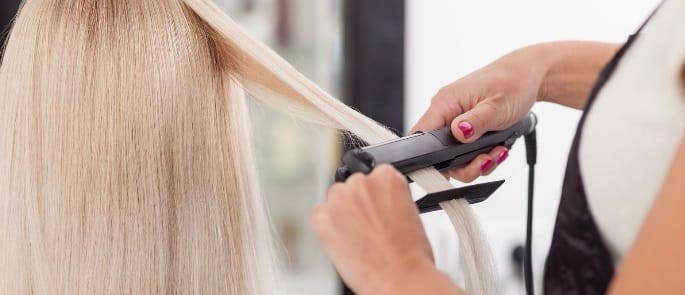
Controlling Dermatitis in Hairdressing
Dermatitis is a type of eczema that occurs when your skin comes into direct contact with an irritant. The irritant damages the outer layer of the skin, causing redness, itching, burning or stinging and can lead to your skin becoming blistered, dry and cracked.
It is reported that up to 70% of hairdressers suffer from work-related skin damage, such as dermatitis, at some point throughout their career. Skin damage like this is unsightly, unpleasant and unprofessional looking but it can be prevented.
What Causes Dermatitis in a Hair Salon?
Dermatitis can affect all parts of the body, but it most commonly affects the hands. People that work with irritants in their job, or those whose work involves a lot of water, are more at risk of suffering from dermatitis than others – which is why hairdressers need to be extra careful. When dermatitis is brought on by work activities, it is known as occupational dermatitis.
In a hair salon, occupational dermatitis is likely to be caused by:
- Frequent contact with water.
- Contact with the chemicals in hairdressing products, e.g. shampoo, bleach or hair colour.
- Contact with cleaning chemicals or detergents.
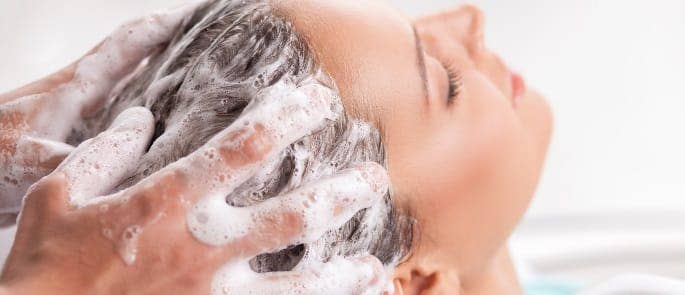
If your work involves a lot of contact with water, then you are more at risk of developing dermatitis. For example, if you wash the hair of 10+ customers throughout the day. The other main cause is contact with the chemicals in hairdressing products when you’re shampooing, dyeing, bleaching or cleaning up afterwards.
There are many ways in which your hands may come into contact with water and chemical products. For example:
- Washing or colouring hair with bare hands.
- Handling equipment left to soak in cleaning chemicals.
- Touching contaminated surfaces or clothing.
- Splashing chemicals onto your skin when mixing or handling them.
- Aerosols, such as hairspray, settling on your skin.
Checking for Dermatitis
You should check your skin for signs of damage every day – look out for areas of soreness, redness or dryness on your hands, wrists and arms. Consider displaying the HSE picture sheet in your workplace to encourage everyone to do this regularly.

How to Prevent Dermatitis in a Hair Salon
Although dermatitis is an unpleasant condition to have, the good news is that it’s easily preventable.
There are a few simple things you can do to help prevent occupational dermatitis:
- Wear disposable, non-latex gloves for shampooing, colouring and bleaching etc.
- Dry your hands thoroughly with a disposable paper towel.
- Moisturize your hands as often as possible with fragrance-free moisturiser. Make sure that you moisturise all of your hands, wrists and fingers.
- Wear a new pair of gloves for every customer.
- Check your skin regularly for early signs of skin problems.
The Health and Safety Executive (HSE) recommends that skin creams are paraffin-based or aqueous moisturising creams. These should be in a form that can be used without cross-contamination between users, so ensure each worker has their own supply. Skin creams are important as they help to remove contamination from the skin and replace lost oils.
PPE for Hairdressers
Personal Protective Equipment (PPE) is recommended as a hair salon health and safety measure where all other control measures are insufficient to reduce the risk to an acceptable level. Protective gloves help to keep water and hair products off your skin and thus prevent dermatitis.
The HSE recommends that the gloves you use at work are single use, all-round smooth, powder-free, non-latex gloves, ideally around 300mm length (top to tail). These are available in different sizes and it is important to use the size that fits properly. Choose long-length gloves with folded cuffs to prevent water running down your arm where possible.
You should throw away single-use gloves every time they are taken off – instil a ‘new customer new gloves’ mantra in the workplace to make sure people comply with this. This is important because the gloves will be contaminated with products and water and may lead to dermatitis if re-used.
You should be sure to always dry your hands thoroughly after any wet work, even when you are simply washing your hands with soap and water. You can download High Speed Training’s infographic on how to safely put on and take off gloves here.
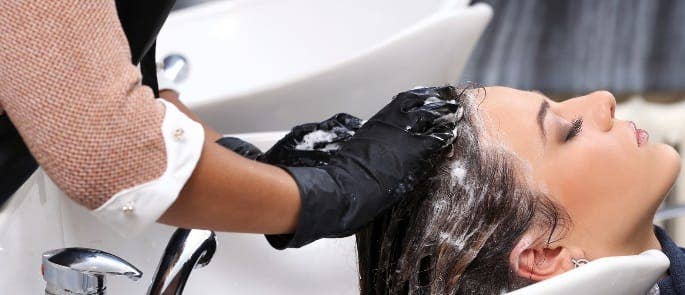
COSHH in Hairdressing: Asthma
When you come into contact with something that irritates your lungs, known as a trigger or respiratory sensitiser, your airways become narrow, tight and inflamed. This sensation is known as asthma and can lead to difficulty breathing, wheezing and coughing and a tight chest.
Asthma can be brought on by certain work activities, including those involved in hairdressing. When asthma is caused by work, it is known as occupational asthma.
Things in a hair salon likely to cause occupational asthma include:
- Hair products.
- Cleaning chemicals.
- Hairspray.
- Fumes from solvents and cleaners.
- Dust from latex.
- Henna products.
How to Prevent Asthma in a Hair Salon
Preventing asthma from developing or worsening whilst at work is a necessary step to take. Tips include:
- Keep the workplace well ventilated. Have an open door or window where possible to get clean air flowing through.
- Avoid using dusty products, such as henna powder, and choose pastes or solutions instead.
- Wear a face mask and stand well back when using hairspray as some products can make existing asthma worse.
Some types of hairdressing products are known to cause problems and so may be labelled ‘may cause sensitisation by inhalation’ or ‘can cause allergic reactions’. Check the label of any products that you use to decide upon the necessary precautions.
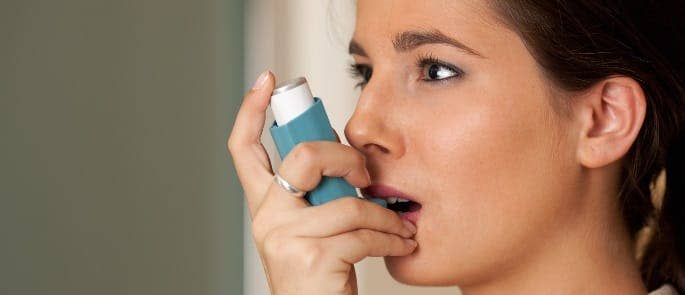
Tips for Cleaning a Hairdressing Premises Safely
All equipment and surfaces need to be cleaned and disinfected regularly to help maintain them and to help prevent the spread of infection through contamination. Unsafe or unhygienic practices can affect the health of both the customer and the worker. However, cleaning chemicals are also a hazardous substance, and so need to be used with care in order to promote health and safety in your hair salon.
You should:
- Keep the work area clean and tidy.
- Disinfect shower heads once a week.
- Clean up spills straight away (clean-as-you-go).
- Wash out all equipment after use and dispose of any waste safely.
- Thoroughly clean all equipment at the end of each day.
- Prepare only as much solution as you will need for immediate use.
- For equipment that comes into contact with skin, clean it before and after each use.
To clean equipment, use hot soapy water before disinfecting or sterilising it, to remove any residue that may prevent the disinfectant from working. A fresh disinfection solution should be prepared each day and the container should be thoroughly cleaned before refilling.
The most effective way of sterilising equipment is to use a bench-top steriliser. Hairdresser suppliers will be able to provide you with details on this.
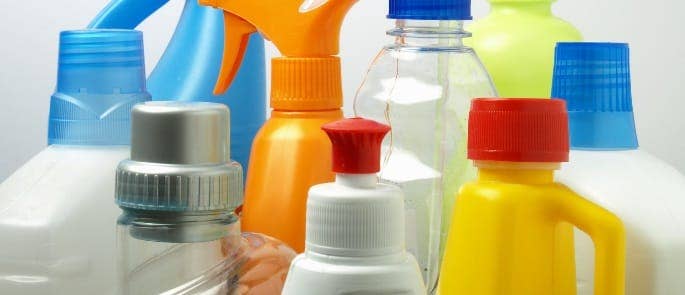
When to See a Doctor
If you think that you or a colleague has developed dermatitis or asthma as a result of exposure to hazardous substances at work, then it is essential that you see a doctor straight away. A doctor can then give a diagnosis of whether the symptoms being experienced are related to the products you are using and will advise on whether work activity should continue or whether changes need to be made.
Further Resources:
- A Guide on Hazards in a Beauty Salon: Free Risk Assessment Template
- The History and Importance of COSHH
- COSHH Quiz
- What is A COSHH Assessment and Does My Workplace Need One?
- Nail Salon Hazards and Precautions for Workers
- COSHH – A Guide to Employers’ and Employees’ Responsibilities
- COSHH Training Course


